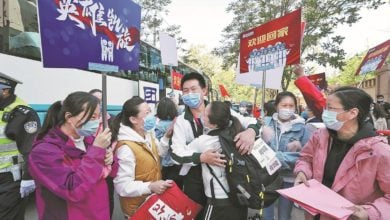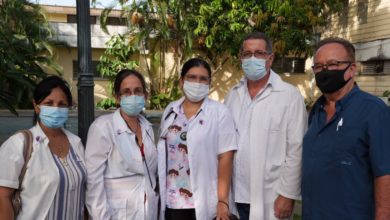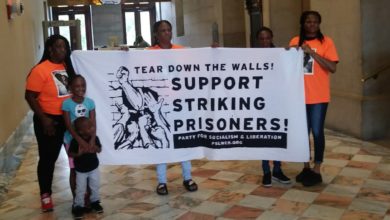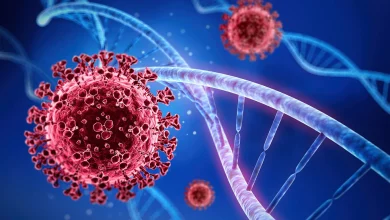A dramatic increase in COVID-19 infection rates across the country has confirmed a grim reality: the United States is entering a new resurgence of the pandemic. This wave comes as the weather gets colder and flu season begins, a scenario public health experts have been dreading since the beginning of the crisis.
In this context, the search for a Coronavirus vaccine has become all the more urgent. Health professionals around the world are racing to develop one that is effective and safe.
On October 19, the World Health Organization announced that 184 countries that have joined the COVAX initiative, where participating states agree to share scientific findings and abandon financial competition so that richer countries can help people in poorer countries obtain a vaccine. The WHO aims to provide at least two billion doses by the end of 2021 and vaccinate at least 20 percent of the population of each participating country. The Chinese government recently announced their participation while the Trump administration has openly refused to join the coalition.
With no regard for potential public health consequences, U.S.-based corporate media has promoted fear-mongering campaigns around vaccine candidates being developed in Cuba, Russia, and China. What is the truth? Will a vaccine be safe, how is it tested, and when can working people really expect to get it?
How is a vaccine made?
In order for a vaccine to be approved, it must demonstrate both safety and efficacy. This means it must be determined safe to administer to the general population without dangerous side effects, and it must be proven to work by either producing a significant immune response or by reducing a person’s chance of catching the virus in the first place.
There are several stages of research and testing that vaccines will go through before being released to the general public. First, animal testing is conducted, often with mice. If the vaccine produces no significant negative side effects and if there is evidence that it works, it will move into clinical trials with humans. There are three phases of clinical trials, and in each phase there are a group of volunteers who receive the vaccine and a group that receives a placebo.
Phase I is conducted on a small group, typically just a few dozen healthy adult volunteers. The primary focus of this phase is to establish the candidate vaccine’s safety and to identify potential side effects as well as the dosing range. How big of a dose is so large that it might produce serious side effects? How much is too little such that it is not actually effective? Volunteers who do not receive the placebo receive varying doses of the vaccine to determine the answer to these questions.
The second phase includes testing with several hundred participants that reflect the demographic the vaccine will be needed for. The primary goal of this phase is to establish efficacy.
Thousands participate in Phase III, and again researchers are looking to determine the candidate vaccine’s efficacy. They will track participants in the real world to see if they contract the disease, and if so how severe their symptoms are. Historically, this phase alone can take months to years.
If the candidate vaccine passes these three phases of clinical trials, then it is approved and manufactured for the general population.
As of October 19, 151 candidate vaccines are in pre-clinical animal testing, 17 are in Phase I, 13 are in Phase II and 10 are in Phase III. One vaccine has been approved in Russia, although they skipped the third phase of trials. As of October 20, four candidate vaccines developed in China have entered international Phase III clinical trials, with promising results. So far, 60,000 volunteers have been given one of the four candidate vaccines, with no significant side effects reported.
Who gets the vaccine?
Healthcare workers on the frontlines of battling the disease are likely to be given access to a vaccine first. The eldery and immunocompromised would be the next priority group. Other adults would be the third priority group, followed last by children. Children are last because they are not included in any stage of clinical trials, and by this point there should be enough data from the general population to determine if it will be safe for them.
Of course it is not enough to only develop a safe and effective vaccine, but there also must be infrastructure in place to manufacture and distribute it efficiently and fairly. When you will receive a vaccine will depend on your job, if you are in a high-risk category, and — depending on what country you live in — if you can afford it.
It will also depend on if you live in a rich or poor country, its manufacturing capacity and its bilateral trade agreements with other countries who have a vaccine. The WHO’s COVAX initiative aims to pool funds that would have been used for market competition to ramp up the manufacturing and distributing infrastructure needed to produce enough vaccines in advance of its release to the general public.
President Donald Trump and his administration have forgone joining COVAX in lieu of the public-private partnership “Operation Warp Speed.” But there is no private company in the United States that has the capacity to produce the necessary volume of vaccines.
Can I trust a vaccine from China?
One recurring criticism is that China is “rushing” a vaccine for the sake of global dominance. In reality, China has a robust medical research community and has invested public funds into disease research for many years.
This is in part because of their socialist system of government that values accessible healthcare, and in part because of their experience with Severe Acute Respiratory Syndrome beginning in 2002 and Middle East Respiratory Syndrome in 2012. SARS and MERS are also coronaviruses, so pre-existing research on developing a vaccine for SARS has been able to inform and speed up the development of a COVID-19 vaccine.
If one is making a judgment based on a country’s overall track record combatting the pandemic, there is much more reason to trust a vaccine developed in China than the United States. The Chinese government and people have utilized central planning to act fast to combat the virus, initiating mandatory quarantines and extensive contact tracing, building new hospitals, wearing masks, and more. Earlier this month, 12 cases of Coronavirus were detected in Quigdao, and the city began immediately testing all nine million residents in only five days.
In a Politico article titled What Happens If China Gets the Covid-19 Vaccine First? Elizabeth Ralph warns of a “nightmare scenario” where, “China announces one of its Covid-19 vaccines has successfully completed Phase III trials. The World Health Organization is enthusiastic. Beijing doles out doses to countries in Latin America and Africa and those with claims to the South China Sea. The United States is nowhere to be found.” What a nightmare! God forbid a country offers to share scientific findings that could save hundreds of thousands of lives.
When announcing China’s participation in COVAX on twitter earlier this month, Chinese foreign ministry spokeswoman Hua Chunying declared, “This is an important step China has taken to uphold the concept of a shared community of health for all and to honour its commitment to turn Covid19 vaccines into a global public good.”
Vaccination for the people, not for profit!
There are deep concerns that should a Coronavirus vaccine be developed by a corporation in a country like the United States, which has not vowed to make it available as a public good, the pharmaceutical industry’s efforts to profit from it would prevent it from being distributed as widely and rapidly as needed. Liberation News spoke to health workers about these fears and related issues.
“Not only has COVID revealed the serious flaws and injustices of our healthcare system, but it has escalated the medical neglect of the working class, people of color and people experiencing homelessness,” said Yesenia Mejia. Mejia, a worker providing healthcare for people experiencing homelessness, argued that “A COVID vaccine must be widely accessible and free because workers are still not safe … Our healthcare system needs to prioritize keeping our entire patient population healthy and safe, not just those who can pay.”
Recent nursing graduate Leela Anand told Liberation News, “Everyone should have access to the vaccine free of cost because the effectiveness of a vaccine is greater when most of the population is vaccinated. This would help lower the transmission rate. In a period of global pandemic, commodifying the vaccine so that a pharmaceutical company or lab could rake in billions of dollars is unjustifiable, it’s a crime against humanity.”





